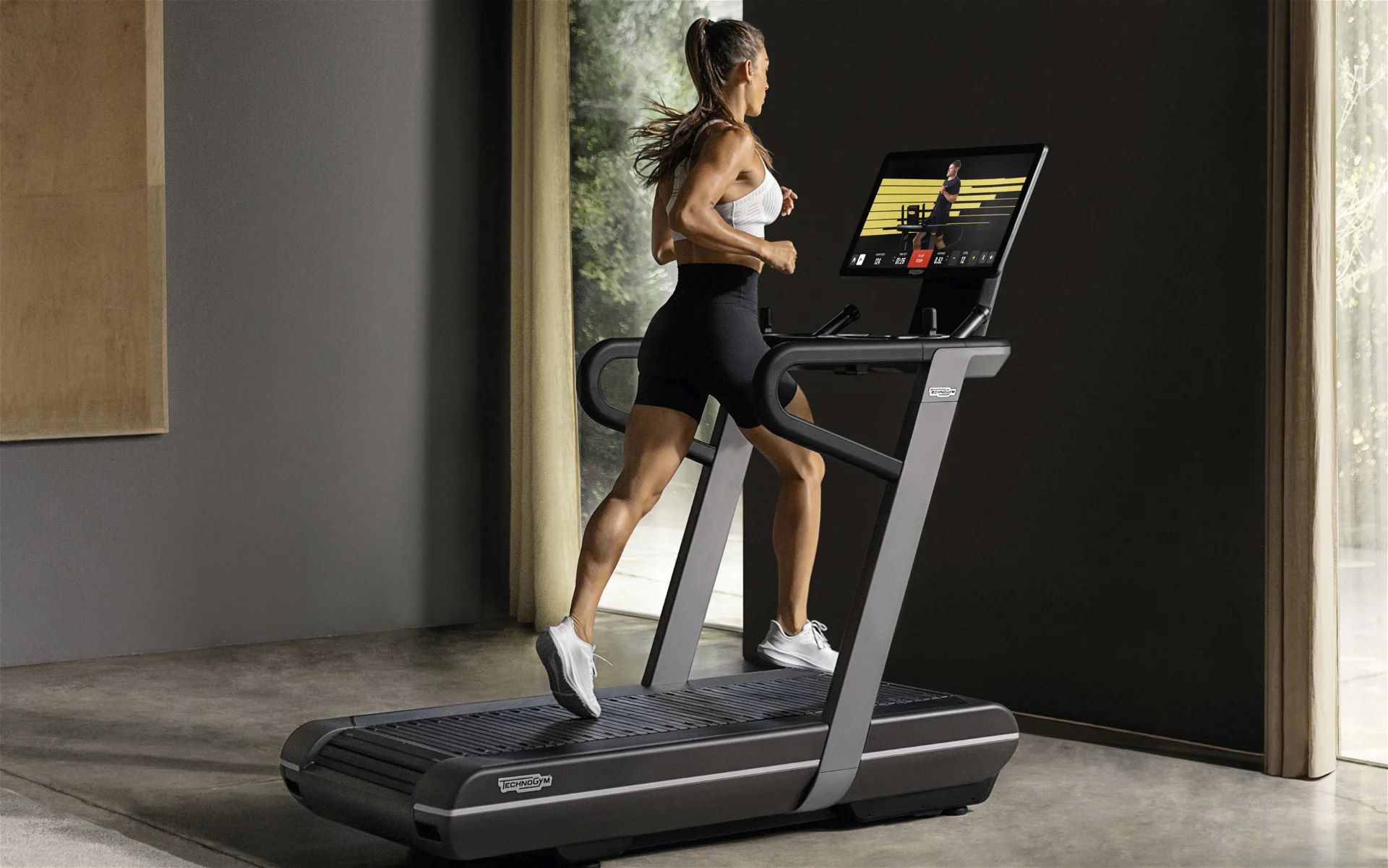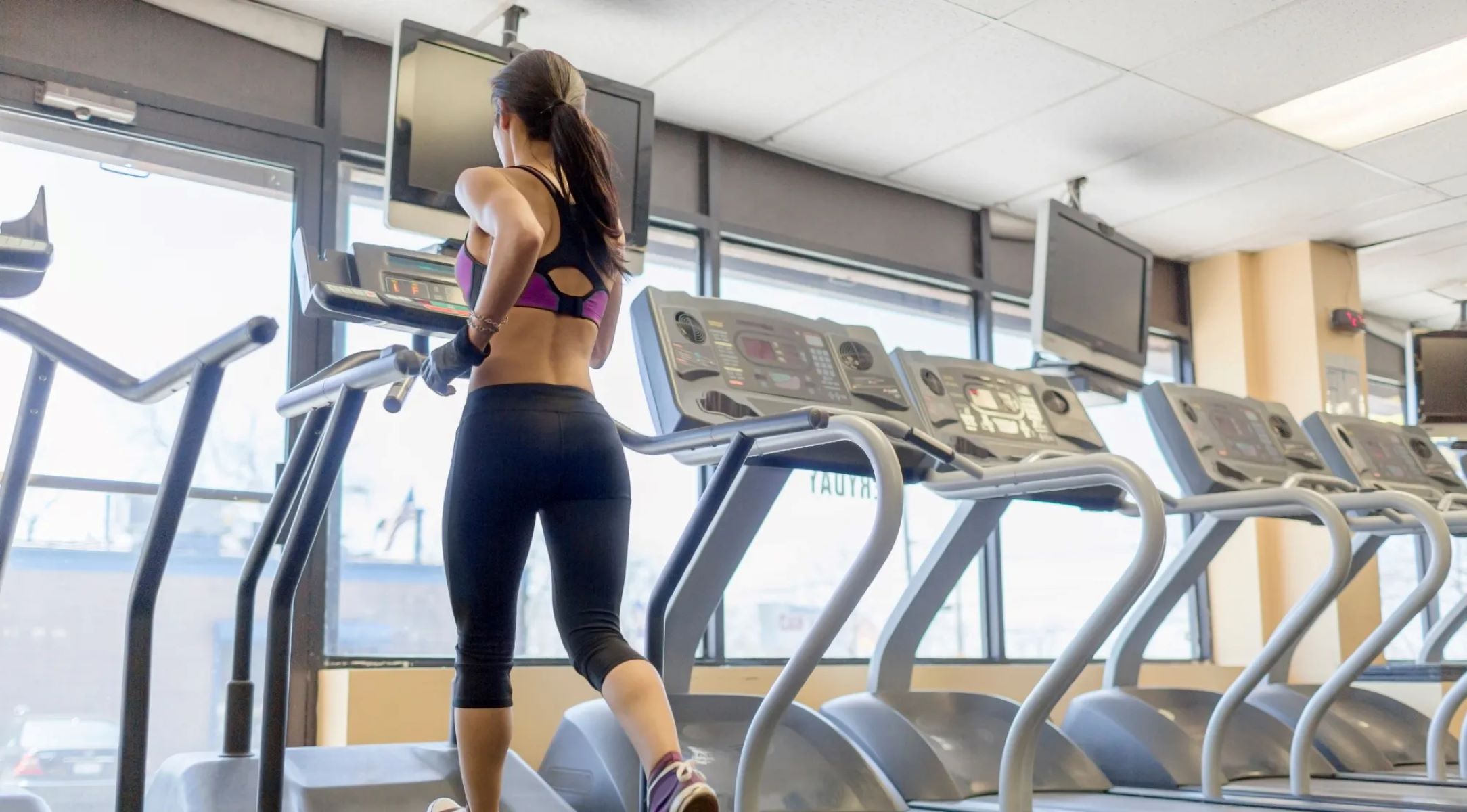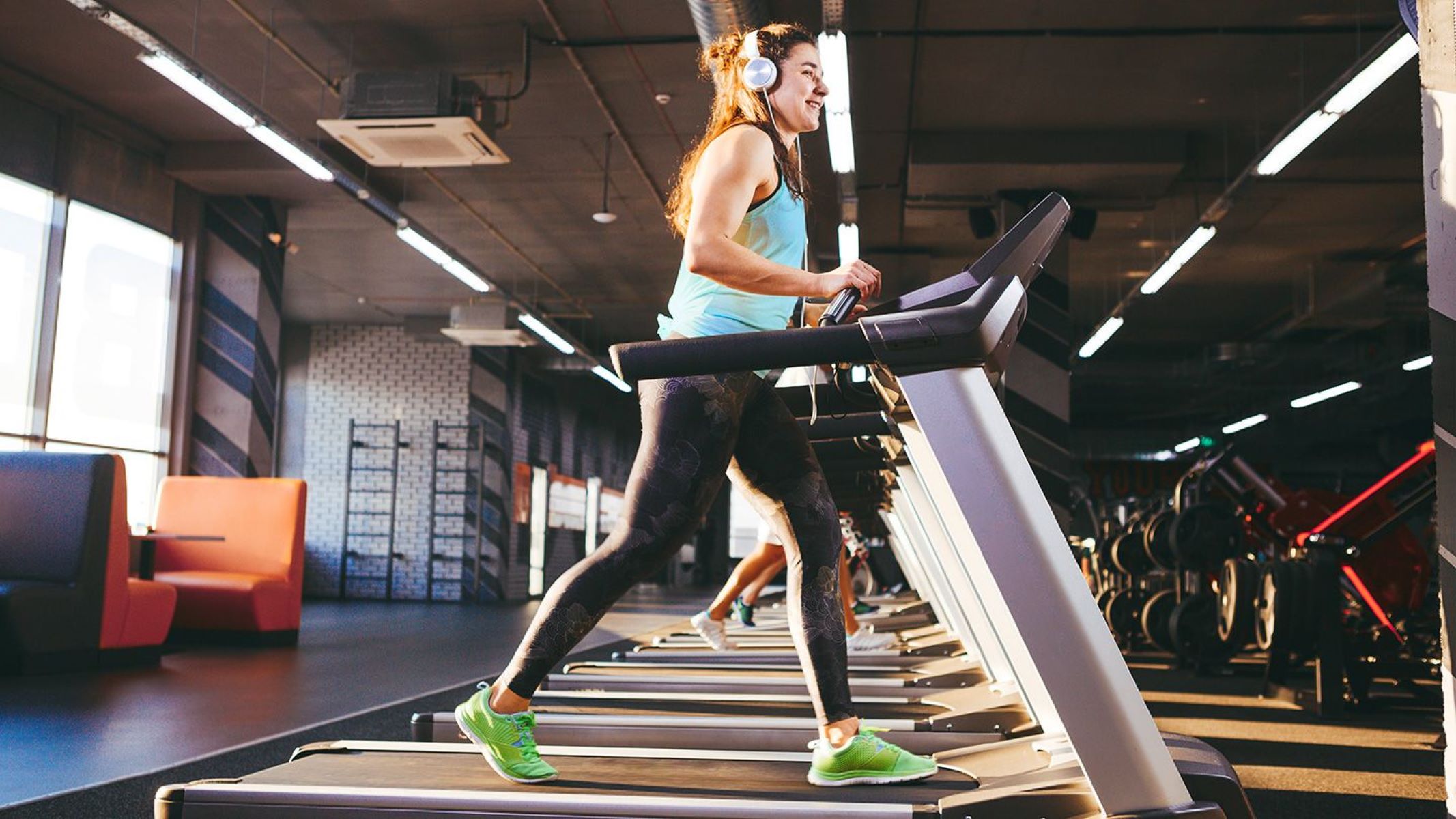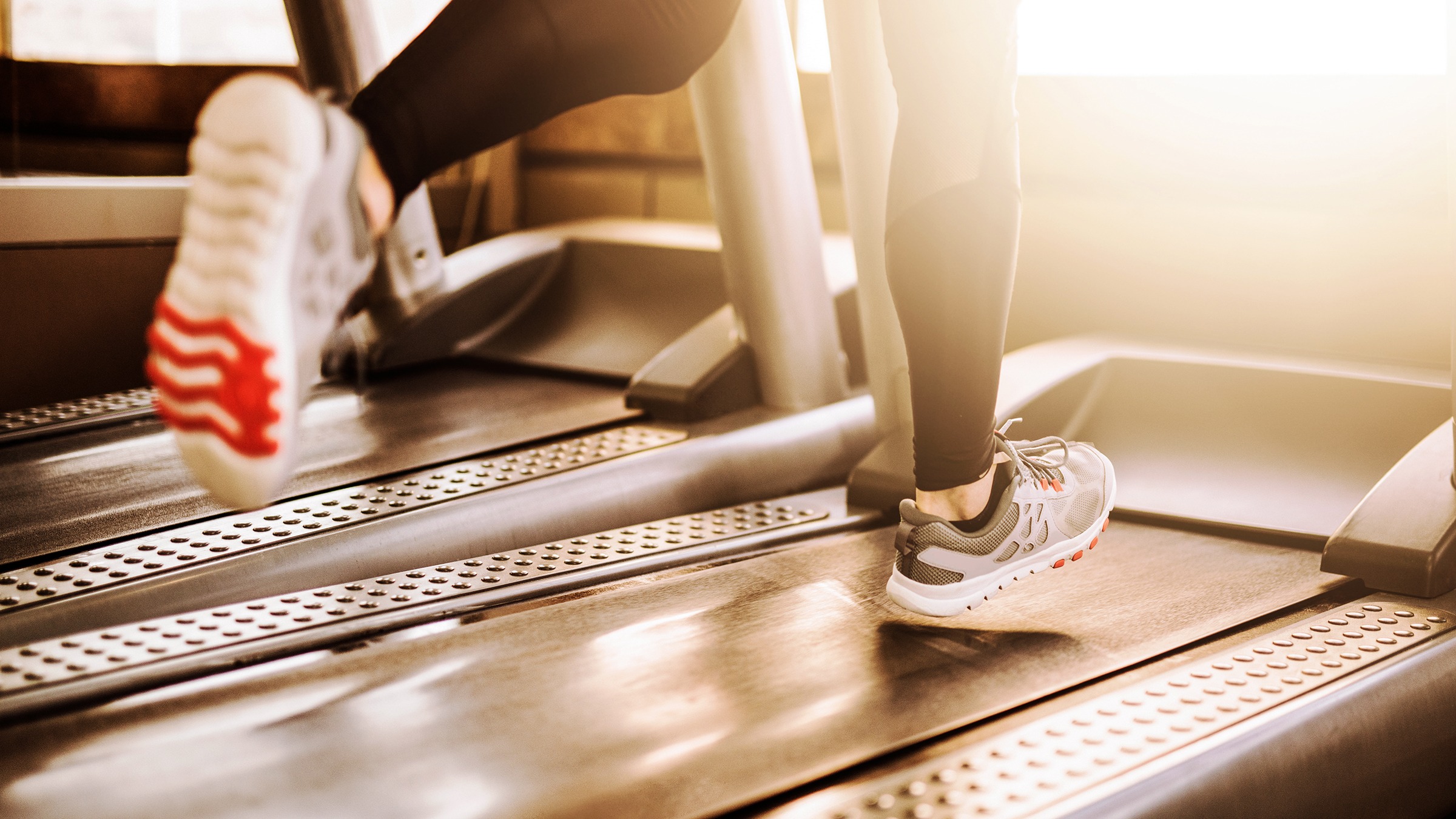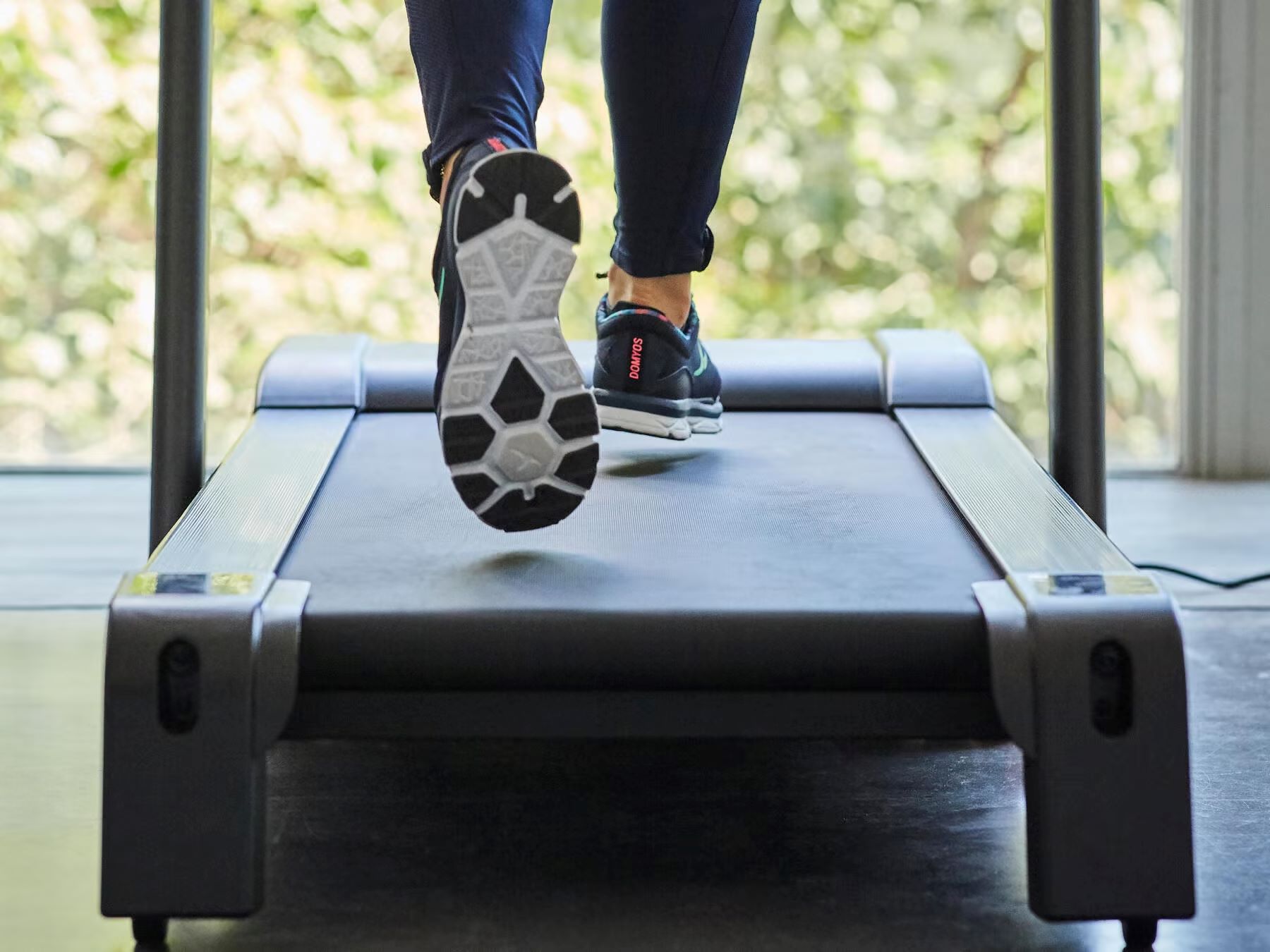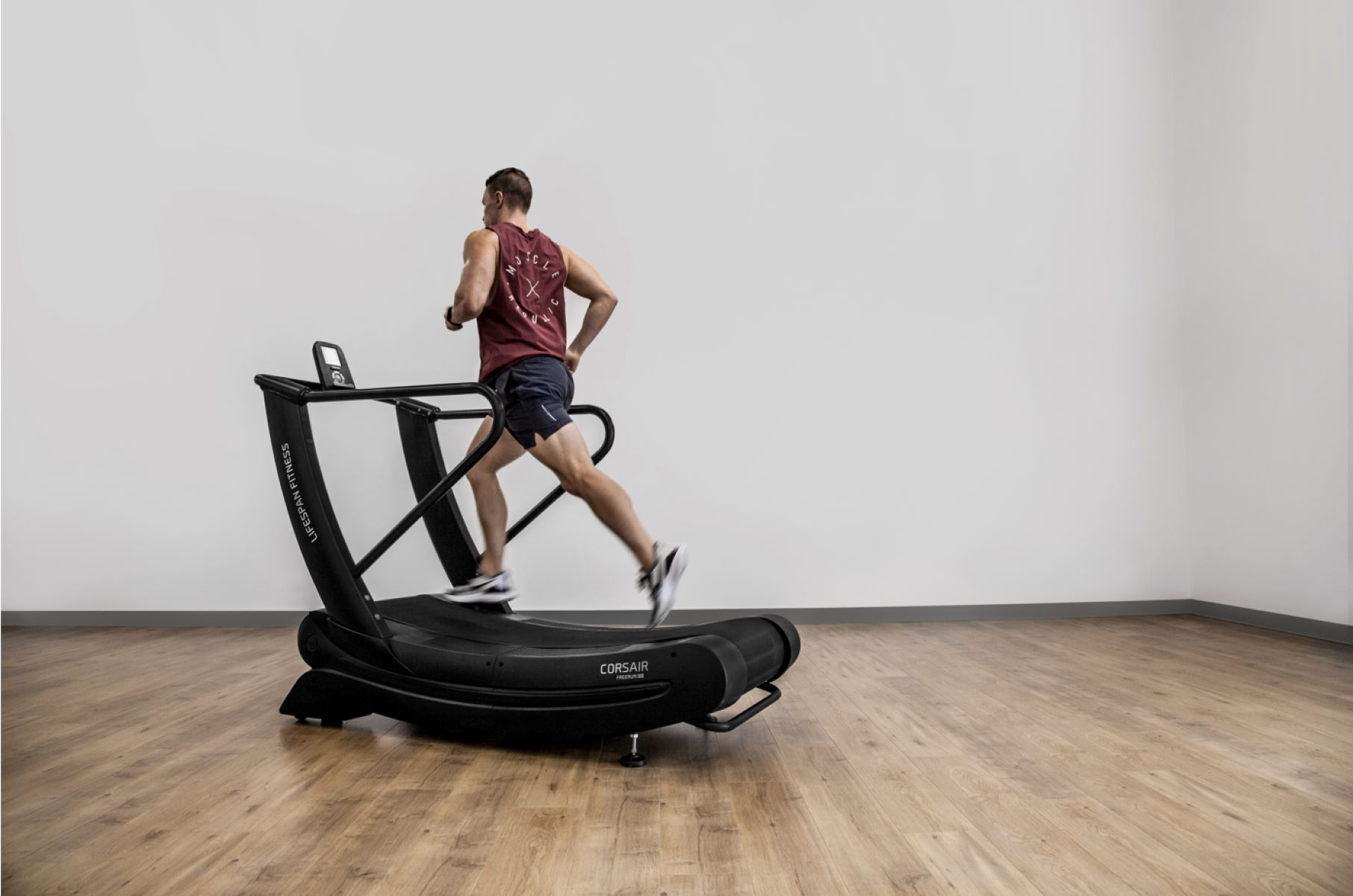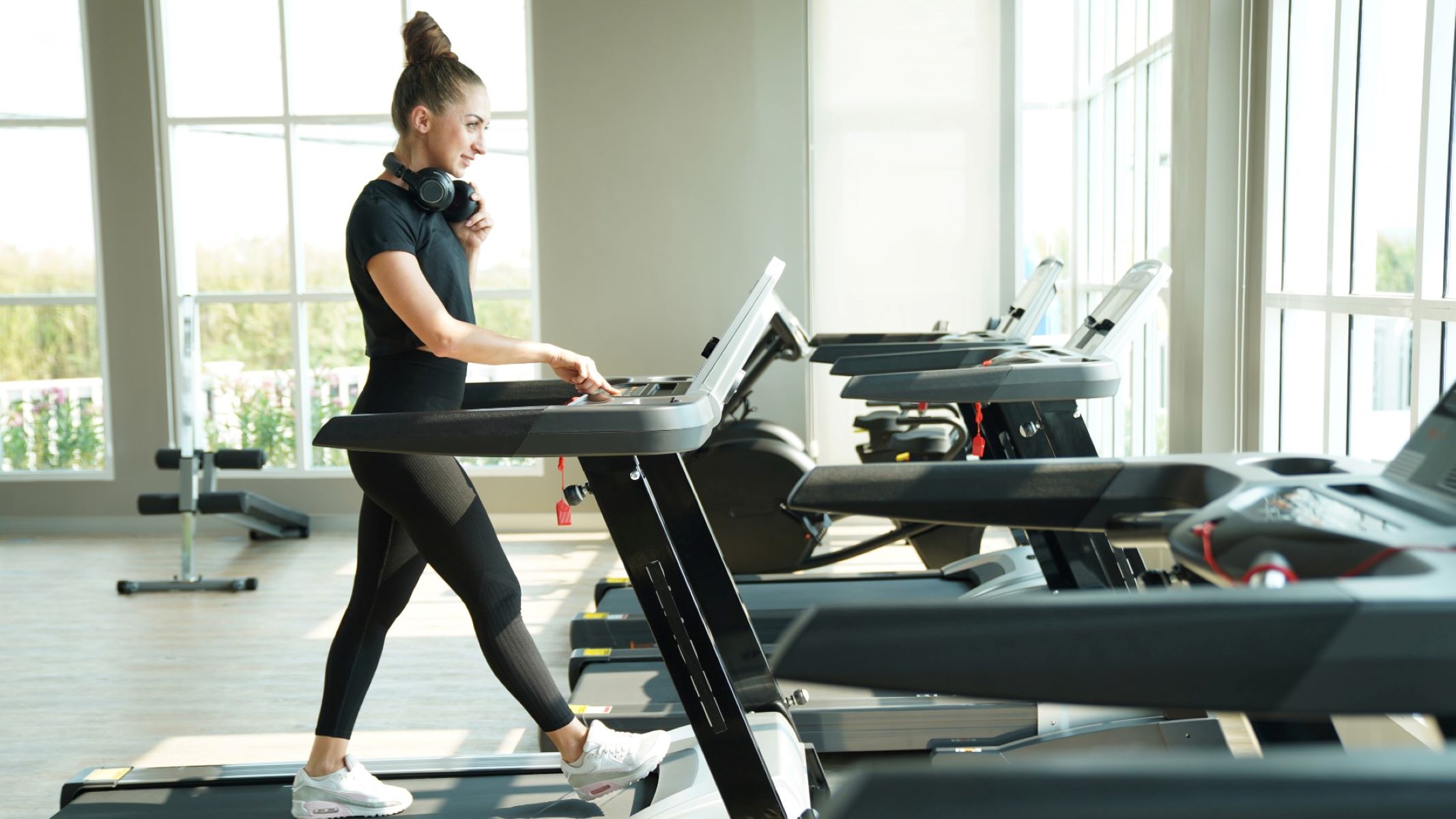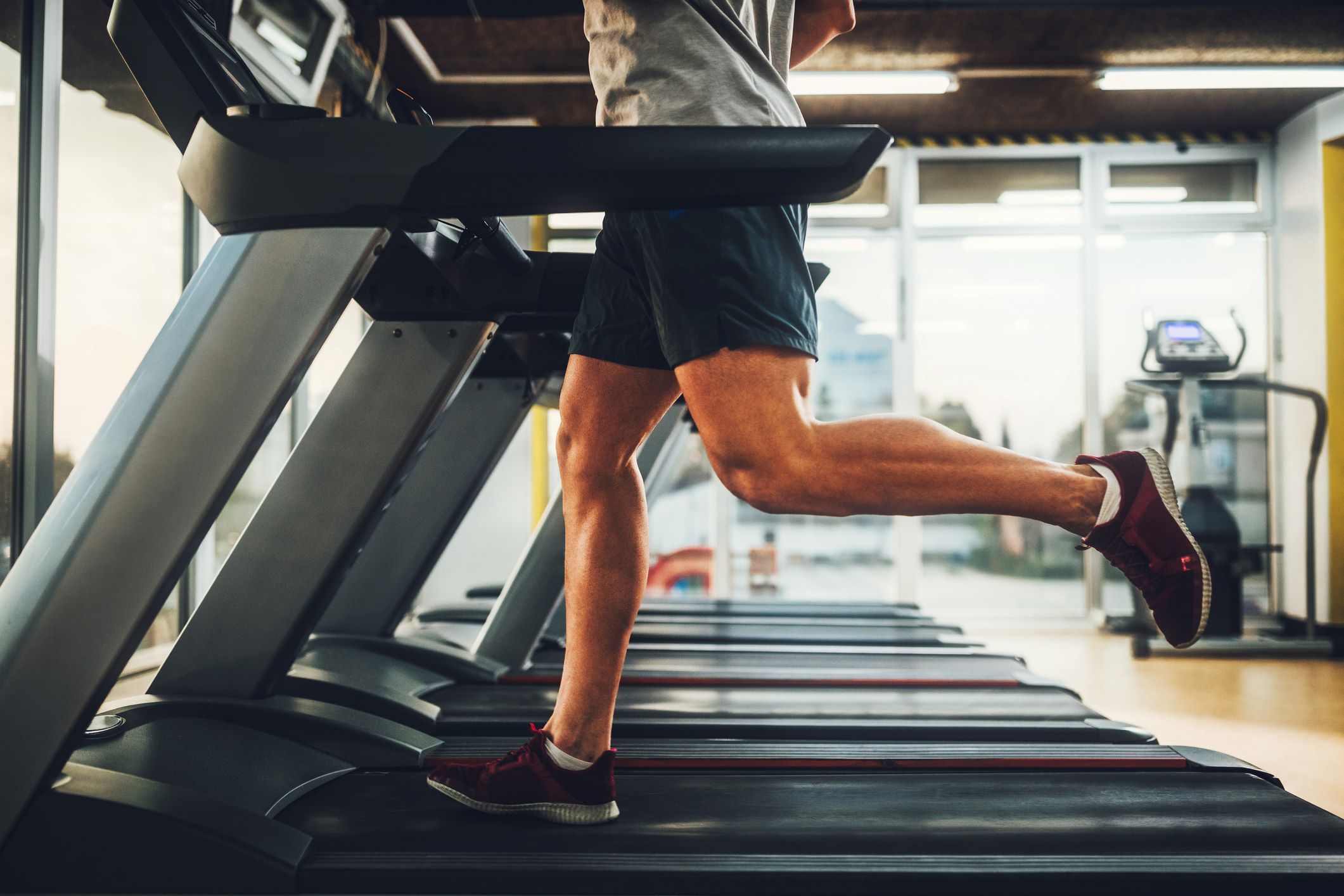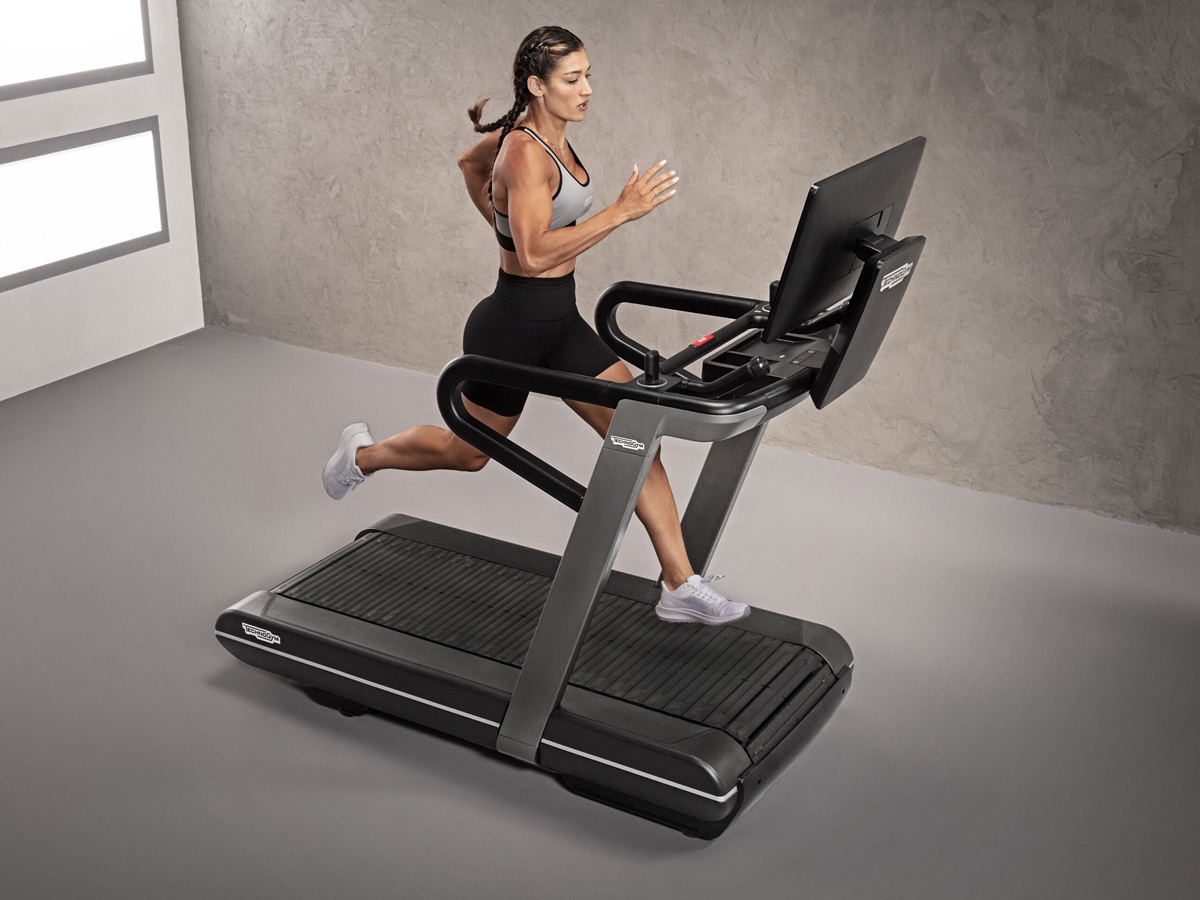

Featured
How To Build Muscle On Treadmill
Modified: August 21, 2023
Learn the most effective techniques to build muscle on a treadmill. Utilize our featured workouts and tips to maximize your gains and achieve your fitness goals.
Introduction
Welcome to the world of fitness and muscle building! If you’re looking to build muscle and burn fat, you may be surprised to learn that the humble treadmill can be a valuable tool in achieving your goals. While traditionally associated with cardiovascular workouts, the treadmill can be used in a variety of ways to target and strengthen different muscle groups.
Whether you’re a beginner or a seasoned gym-goer, incorporating treadmill exercises into your routine can provide a dynamic and efficient way to build muscle. In this article, we will explore the various techniques and strategies you can use to maximize your muscle-building potential on the treadmill.
Before we dive into the specifics, it’s important to note that building muscle on the treadmill requires a combination of proper technique, dedication, and an understanding of your body’s capabilities. Additionally, it’s always wise to consult with a healthcare professional or a certified trainer before starting any new exercise regimen.
Now, let’s explore the key steps and techniques for building muscle on the treadmill, from choosing the right equipment to incorporating strength exercises into your routine.
Choosing the Right Treadmill
When it comes to building muscle on a treadmill, selecting the right equipment is crucial. Here are some factors to consider when choosing a treadmill:
1. Sturdy Construction: Look for a treadmill that is built with high-quality materials and has a solid and durable frame. This is important as you’ll be performing various exercises that put stress on the machine.
2. Motor Power: Opt for a treadmill with a powerful motor to ensure smooth and consistent performance. Look for a motor with at least 2.5 horsepower (HP) for effective muscle-building workouts.
3. Deck Size: The size of the treadmill’s deck matters, especially if you plan to perform exercises that require a wider range of motion. Choose a treadmill with a spacious deck that allows you to move comfortably.
4. Incline and Speed Options: A treadmill with adjustable incline and speed settings offers more versatility in your workouts. Being able to simulate uphill runs or increase the intensity can help target different muscle groups and add variety to your routine.
5. Shock Absorption: Look for a treadmill with adequate cushioning or shock absorption features to reduce the impact on your joints. This is important for minimizing the risk of injuries during intense workouts.
6. Display and Tracking: Consider a treadmill with a user-friendly display that allows you to track your progress, including distance, time, speed, and calories burned. This can help you stay motivated and monitor your performance.
7. Budget: Set a budget for your treadmill purchase and look for options that offer the best features within your price range. Remember, investing in a quality treadmill is a long-term investment in your fitness journey.
Take the time to research and compare different treadmill models, read reviews from verified buyers, and if possible, try out the equipment at a local fitness store. By choosing the right treadmill, you set yourself up for success in building muscle and achieving your fitness goals.
Setting Up the Treadmill for Muscle Building
Before you begin your muscle-building treadmill workout, it’s essential to set up the machine correctly to ensure safety and effectiveness. Follow these steps to prepare your treadmill:
1. Adjust the Incline: Depending on your fitness level and workout goals, set the treadmill incline to an appropriate level. Increasing the incline replicates uphill running and engages more muscles in your lower body, including the glutes, quadriceps, and calves.
2. Select the Speed: Set the speed to a comfortable warm-up pace. It’s important to warm up your muscles before engaging in any intense exercise. This can be done by walking or jogging at a moderate speed for 5-10 minutes.
3. Secure the Safety Clip: Attach the safety clip to your clothes and secure it to the treadmill. The safety clip is a crucial safety feature that automatically stops the machine in case of an emergency or if you accidentally lose your balance.
4. Position Yourself: Stand in the center of the treadmill deck with your feet shoulder-width apart. Keep your body relaxed and maintain good posture throughout your workout. Avoid leaning too far forward or backward, as this can lead to improper form and increased risk of injury.
5. Grip the Handrails: For stability, lightly grip the handrails while maintaining a comfortable posture. However, try not to rely heavily on the handrails during your workout, as this can diminish the effectiveness of the exercise and put unnecessary strain on your wrists and upper body.
6. Wear Appropriate Footwear: Make sure to wear proper workout shoes that provide adequate support and cushioning for your feet. This helps reduce the risk of discomfort or injuries caused by improper footwear.
7. Position the Console: Adjust the treadmill console so that it is within easy reach and at a comfortable viewing angle. This allows you to monitor your progress and make necessary adjustments to your workout settings without losing focus or balance.
Remember, safety should always be a priority when using any exercise equipment. By setting up your treadmill correctly, you ensure a safe and efficient workout session for building muscle and achieving your fitness goals.
Warm-Up Exercises
Before diving into your muscle-building routine on the treadmill, it’s crucial to warm up your muscles and prepare your body for the upcoming workout. A proper warm-up helps loosen the muscles, increases blood flow, and reduces the risk of injury. Here are some effective warm-up exercises to incorporate:
1. Brisk Walking: Start your warm-up by walking on the treadmill at a moderate pace for 5-10 minutes. This helps increase your heart rate and gradually prepares your body for more intense exercise.
2. Dynamic Stretches: Perform dynamic stretches that target the major muscle groups you’ll be engaging during your workout. Examples include leg swings, arm circles, walking lunges, and high knees. Do each exercise for about 10-15 repetitions or for a distance of 10-15 yards.
3. Jumping Jacks: Incorporate a few sets of jumping jacks in your warm-up routine to further elevate your heart rate and engage multiple muscle groups. Start with a few sets of 10 repetitions to get your blood flowing and warm up the entire body.
4. Bodyweight Squats: Perform bodyweight squats to activate and warm up your lower body muscles. Stand with your feet shoulder-width apart, lower your hips down as if sitting on an imaginary chair, and then return to the starting position. Aim for 10-15 repetitions.
5. Arm Circles: Stand straight with your feet shoulder-width apart, extend your arms to the sides, and make small circles with your arms. Gradually increase the size of the circles to warm up the shoulder joints and improve mobility. Perform 10-15 repetitions in both clockwise and counterclockwise directions.
During the warm-up, focus on controlled movements and gradually increase the intensity as your muscles start to loosen up. Listen to your body and adjust the duration and intensity of the warm-up exercises according to your fitness level and comfort.
Remember, a proper warm-up not only prepares your body physically but also mentally. It helps you transition smoothly into your muscle-building treadmill workout and sets the stage for a productive and injury-free session.
High-Intensity Interval Training (HIIT)
High-Intensity Interval Training (HIIT) is a powerful and efficient method for building muscle and increasing cardiovascular fitness. It involves alternating between short bursts of intense exercise and brief recovery periods. HIIT workouts on the treadmill can effectively elevate your heart rate, burn calories, and stimulate muscle growth. Here’s how to incorporate HIIT into your treadmill routine:
1. Choose Your Work-Interval: Select a work-interval duration that challenges you. This could be anywhere from 20 seconds to 1 minute, depending on your fitness level and preferences. During the work interval, push yourself to perform at a high intensity.
2. Select Your Rest-Interval: After the work interval, allow yourself a recovery period to catch your breath and lower your heart rate. The rest interval can range from 10 seconds to 1 minute. Use this time to slow down or walk at a comfortable pace.
3. Repeat the Intervals: Aim to complete 5-10 sets of work and rest intervals, depending on your fitness level and available time. As you progress, you can increase the number of intervals, decrease the rest time, or increase the intensity.
4. Vary Your Speed and Incline: During the work intervals, increase the speed or incline to intensify the exercise. This helps challenge your muscles and stimulate growth. Experiment with different combinations to target different muscle groups and add variety to your workouts.
5. Listen to Your Body: Pay attention to how your body feels during the high-intensity intervals. Push yourself, but avoid overexertion or compromising your form. If needed, modify the intensity or duration to suit your fitness level and prevent injuries.
By incorporating HIIT into your treadmill routine, you can maximize your muscle-building potential within a shorter time frame. The intense bursts of exercise followed by recovery periods help boost your metabolism, improve endurance, and promote muscle growth.
Remember, HIIT workouts are challenging, so it’s important to gradually increase the intensity and duration as your fitness level improves. Consult with a certified trainer to get personalized advice and guidance on incorporating HIIT into your treadmill workouts.
Incline Training for Muscle Building
Incorporating incline training into your treadmill workout is an excellent way to target and strengthen specific muscle groups. Adjusting the incline adds resistance, simulates uphill running or walking, and engages muscles in your lower body. Here’s how to utilize incline training for muscle building:
1. Select an Appropriate Incline: Start with a moderate incline of around 5% and gradually increase it as your muscles adapt and become stronger. The ideal incline depends on your fitness level and goals. Higher inclines typically engage the glutes, hamstrings, and calves more intensely.
2. Alternate Between Incline and Flat: Incorporate intervals of incline and flat running or walking in your workout. For example, you can alternate between 2 minutes at an incline of 7% and 2 minutes on a flat surface. This variation challenges different muscle groups and adds variety to your routine.
3. Focus on Proper Form: Maintain good posture and form while training on an incline. Keep your core engaged, your back straight, and your gaze forward. Avoid leaning on the handrails, as it diminishes the engagement of your core and lower body muscles.
4. Use Shorter Strides: When running or walking uphill, shorten your strides to place more emphasis on your leg muscles. Focus on driving your knees higher and pushing off the balls of your feet. This helps activate and strengthen the quadriceps, hamstrings, and glute muscles.
5. Experiment with Speed and Incline: Vary the combination of speed and incline to target different muscle groups and add intensity to your workout. For example, increase the incline and maintain a moderate pace for a challenging endurance-focused workout, or decrease the incline and sprint for shorter bursts to improve speed and power.
6. Be Mindful of Your Limits: Incline training is demanding, so listen to your body and adjust the intensity and duration according to your fitness level and comfort. Start with shorter incline segments and gradually increase the duration and intensity as your strength and endurance improve.
Incorporating incline training into your treadmill workout can help you build muscle, increase strength, and improve overall cardiovascular fitness. It’s a versatile technique that allows you to target specific muscle groups while adding variety and challenge to your routine.
Remember to consult with a fitness professional to personalize your incline training routine based on your goals and fitness level. They can provide guidance on proper technique and help you design an effective muscle-building workout plan on the treadmill.
Speed and Resistance Training
In addition to incline training, incorporating speed and resistance training into your treadmill workouts can help build muscle, increase endurance, and improve overall cardiovascular fitness. By manipulating the speed and resistance settings, you can target different muscle groups and challenge your body in various ways. Here’s how to integrate speed and resistance training into your treadmill routine:
1. Interval Speed Training: Alternate between periods of high-intensity sprinting and active recovery. For example, sprint at your maximum speed for 30 seconds, followed by a slower jogging or walking pace for 1 minute. Repeat these intervals for a set duration or number of repetitions.
2. Progressive Speed Increase: Start at a comfortable pace and slowly increase the speed every minute or half a mile. This progressive speed training helps build muscle endurance and stamina while challenging your cardiovascular system.
3. Resistance Training Modes: Many treadmills offer resistance settings that mimic outdoor running conditions, such as wind resistance or hill climbing. These modes increase the intensity of your workout and engage additional muscle groups, enhancing your muscle-building potential.
4. Resistance Band Workouts: Attach resistance bands to the handrails or wear them around your legs for added resistance. This helps activate and strengthen your upper body muscles while walking or running on the treadmill.
5. Sled Push or Pull: If your treadmill has a sled push or pull feature, take advantage of it for resistance training. Load the sled with an appropriate amount of weight and push or pull against the resistance to target your lower body muscles, especially the glutes and quadriceps.
6. Leg-Specific Speed Intervals: Mix up your training by focusing on speed intervals that specifically target the muscles in your legs. For example, sprint at maximum speed for 20 seconds, then recover at a slower pace for 40 seconds. Repeat these intervals, gradually increasing the number of repetitions over time.
Remember to customize your speed and resistance training based on your fitness level and goals. Pay attention to your form and avoid overexertion, as proper technique is crucial for effective and safe muscle-building exercises on the treadmill.
As always, consult with a certified fitness professional to create a personalized speed and resistance training plan that aligns with your fitness objectives. They can provide guidance on proper technique, intensity, and progression to help you achieve your desired muscle-building results.
Incorporating Strength Exercises on the Treadmill
While the treadmill is primarily known for aerobic workouts, it can also be a valuable tool for incorporating strength exercises into your routine. By adding resistance or bodyweight exercises on the treadmill, you can target and strengthen different muscle groups. Here’s how to incorporate strength exercises on the treadmill:
1. Walking Lunges: Perform walking lunges by taking a lunge step forward with one leg and lowering your body until both knees are bent at a 90-degree angle. Push off with the back leg and step forward with the other leg to repeat the movement. This targets the quads, hamstrings, and glutes.
2. Side Steps: Stand sideways on the treadmill and perform side steps by stepping out to the side with one foot, then bringing the other foot to meet it. Repeat this movement on one side for a set distance or time, then switch to the other side. This exercise engages the glutes, hips, and outer thighs.
3. Push-Ups: Carefully position yourself behind the treadmill, so your hands are on the treadmill deck and your feet are on the floor. Perform push-ups by lowering your chest towards the deck and then pushing back up. This targets the chest, shoulders, and triceps.
4. Incline Dumbbell Press: Set the treadmill at a steep incline and grab a pair of dumbbells. Lie down on the treadmill deck with your back against the incline, and perform chest presses by extending your arms and lifting the dumbbells towards the ceiling. This exercise targets the chest, shoulders, and triceps.
5. Single-Leg Deadlift: Stand on one leg while holding a pair of dumbbells in your hands. Hinge at the hips and lower the dumbbells towards the treadmill deck while extending the opposite leg straight back. Return to the starting position and repeat the movement. This exercise targets the hamstrings, glutes, and lower back.
6. Plank Holds: Position yourself facing the treadmill with your forearms resting on the treadmill deck and your feet on the floor. Engage your core and maintain a straight line from your head to your heels. Hold this plank position for a set duration, focusing on stability and core strength.
Remember to use caution and ensure proper form when incorporating strength exercises on the treadmill. Start with lighter weights or bodyweight exercises and gradually increase the intensity as your strength and confidence improve.
Integrating strength exercises into your treadmill routine not only helps build muscle, but it also adds variety and challenges your body in new ways. Consult with a certified trainer to receive guidance on proper technique and to design a customized strength training plan that suits your fitness goals and abilities.
Cooling Down and Stretching
After completing your muscle-building treadmill workout, it’s important to properly cool down your body and engage in stretching exercises. Cooling down gradually reduces your heart rate and helps prevent dizziness or lightheadedness. Stretching, on the other hand, promotes flexibility, improves muscle recovery, and reduces the risk of post-workout soreness. Here’s how to cool down and stretch after your treadmill session:
1. Cooling Down: Begin by gradually reducing the speed and incline of the treadmill. Slowly walk at a comfortable pace for 5-10 minutes to bring your heart rate back to its resting state. This allows your body to transition from exercise to a state of rest and recovery.
2. Full-Body Stretch: Perform a series of dynamic stretches that target all major muscle groups. Examples include arm swings, side stretches, hip circles, and calf raises. Perform each stretch for 10-15 seconds and repeat the sequence for a total of 5-10 minutes.
3. Specific Muscle Stretches: Focus on stretching the specific muscle groups targeted during your treadmill workout. For example, stretch your quadriceps by standing upright, bending one knee, and gently pulling your heel towards your buttocks. Hold the stretch for 15-30 seconds on each leg.
4. Hamstring Stretches: Sit on the edge of the treadmill deck with one leg stretched out in front of you and the other bent. Lean forward, reaching towards your toes to stretch your hamstring. Hold the stretch for 15-30 seconds on each leg.
5. Stretching the Calf Muscle: Stand near the front of the treadmill, place the ball of one foot on the edge of the deck with your heel on the floor. Lean forward, keeping your back leg straight, and feel the stretch in your calf. Hold for 15-30 seconds, then switch to the other leg.
6. Deep Breathing: Take a few minutes to focus on deep breathing and relaxation. Inhale deeply through your nose, filling your lungs with air, and exhale slowly through your mouth. This helps calm your body and mind, promoting a state of relaxation.
Remember to stretch within your comfort zone and avoid bouncing or jerking movements, as they can lead to muscle strain. If you feel any discomfort or pain during a stretch, ease off and modify the movement to a more comfortable position.
Cooling down and stretching after your treadmill workout allows your body to recover, reduces muscle tension, and improves overall flexibility. Make it a regular part of your fitness routine to optimize your muscle-building progress and prevent injuries.
Additionally, it’s worth noting that a post-workout recovery period is just as important as the workout itself. Hydrate properly, refuel with a nutritious snack, and listen to your body’s signals for rest and recovery.
Conclusion
Building muscle on the treadmill is not only possible but also highly effective in achieving your fitness goals. By incorporating various techniques such as incline training, high-intensity interval training (HIIT), speed and resistance training, and strength exercises, you can transform your treadmill workouts into muscle-building powerhouses.
Choosing the right treadmill and setting it up correctly is crucial for a safe and productive workout. Consider factors such as sturdiness, motor power, incline options, and shock absorption when selecting your equipment. Take the time to properly warm up your muscles and engage in dynamic stretches before embarking on your muscle-building journey on the treadmill.
Throughout your treadmill workouts, don’t be afraid to challenge yourself. Whether it’s through adjusting the speed, increasing the incline, or incorporating strength exercises, pushing your limits helps stimulate muscle growth and improve overall fitness.
Remember to cool down and stretch after each treadmill session to promote muscle recovery, flexibility, and prevent injuries. Focus on targeted stretches for the specific muscle groups you worked during your workout, and engage in deep breathing for relaxation.
As with any fitness journey, consistency and progression are key. Gradually increase the intensity, duration, and difficulty of your treadmill workouts to continue challenging your muscles and achieving new levels of strength and fitness.
Consult with a certified fitness professional to develop a tailored treadmill workout plan that aligns with your goals and abilities. They can provide guidance on proper technique, monitor your progress, and offer support and motivation along the way.
Now that you’re equipped with the knowledge and strategies to build muscle on the treadmill, lace up your running shoes, hop on the treadmill, and embark on your muscle-building adventure. With dedication and perseverance, you can achieve the strong, sculpted physique you desire.
